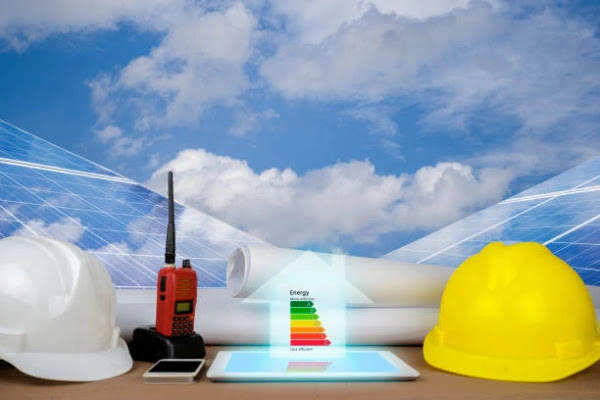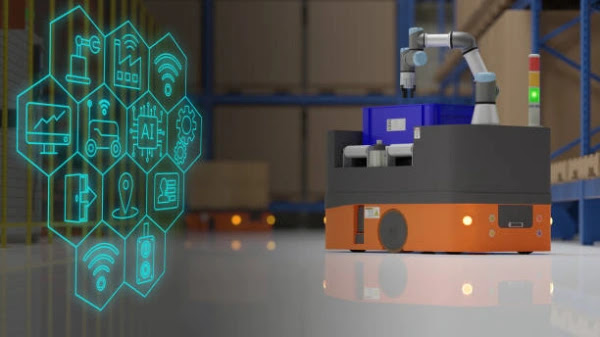Featured
- Get link
- X
- Other Apps
Smart Infrastructure
Disaster Management and Resilience
Introduction
As the frequency and severity of natural disasters continue
to rise due to climate change and urbanization, there is an urgent need for
innovative solutions to enhance disaster management and build resilience in
vulnerable communities. Smart infrastructure, powered by advanced technologies
such as Internet of Things (IoT), artificial intelligence (AI), and remote
sensing, offers promising approaches to monitor, mitigate, and respond to
disasters effectively. This article explores the concept of smart infrastructure
for disaster management and resilience, its key components, applications,
benefits, and implications for building more resilient communities.
Understanding Smart Infrastructure for Disaster Management:
Smart infrastructure for disaster management encompasses a
range of technologies and strategies aimed at leveraging data, connectivity,
and automation to enhance resilience and response capabilities before, during,
and after disasters. This includes the integration of sensors, monitoring
systems, predictive analytics, and communication networks into critical
infrastructure such as buildings, transportation systems, utilities, and urban
spaces. Key components of smart infrastructure for disaster management include:
- Sensors and monitoring systems:
Smart infrastructure relies on a network of sensors and monitoring systems
to collect real-time data on environmental conditions, infrastructure
performance, and disaster impacts. These sensors measure parameters such
as temperature, humidity, seismic activity, water levels, and air quality,
providing early warning of potential hazards and enabling proactive risk
management.
- Predictive analytics: Smart
infrastructure utilizes predictive analytics techniques, such as machine
learning and data modeling, to analyze historical data, forecast future
events, and identify patterns and trends associated with disasters. These
analytics tools help stakeholders anticipate disaster scenarios, assess
risk levels, and prioritize mitigation and preparedness measures to
minimize potential impacts.
- Communication networks: Smart
infrastructure integrates communication networks, such as wireless,
satellite, and broadband technologies, to facilitate real-time data
exchange, coordination, and decision-making among stakeholders. These
networks enable seamless communication and information sharing between
emergency responders, government agencies, utility providers, and the
public, improving situational awareness and response coordination during
disasters.
- Remote sensing and imaging: Smart
infrastructure leverages remote sensing technologies, such as satellites,
drones, and aerial imagery, to monitor large-scale environmental changes,
assess damage, and conduct search and rescue operations in
disaster-affected areas. These technologies provide valuable insights into
disaster impacts, inform damage assessments, and support decision-making
for recovery and reconstruction efforts.
Applications of Smart Infrastructure for Disaster Management:
Smart infrastructure for disaster management has numerous
applications across various phases of the disaster management cycle, including
preparedness, mitigation, response, and recovery. Some key applications
include:
- Early warning systems: Smart
infrastructure enables the development and deployment of early warning
systems that provide timely alerts and notifications to communities at
risk of natural disasters such as hurricanes, floods, wildfires, and
earthquakes. These systems use data from sensors, weather forecasts, and
predictive models to detect potential hazards, assess threat levels, and
issue warnings to residents, emergency responders, and local authorities.
- Infrastructure monitoring and
resilience: Smart infrastructure monitors the condition and
performance of critical infrastructure such as bridges, roads, buildings,
and utilities to identify vulnerabilities and assess resilience levels in
the face of disasters. By collecting and analyzing data on structural
integrity, operational status, and maintenance needs, smart infrastructure
helps stakeholders prioritize investments, retrofitting, and maintenance
efforts to strengthen infrastructure resilience and reduce risk.
- Emergency response and coordination:
Smart infrastructure supports emergency response and coordination efforts
by providing real-time situational awareness, communication tools, and
decision support systems to emergency responders and decision-makers. By
integrating data from multiple sources, such as sensors, social media, and
geospatial platforms, smart infrastructure enables responders to assess
the severity of disasters, allocate resources effectively, and coordinate
rescue and evacuation operations in disaster-affected areas.
- Damage assessment and recovery
planning: Smart infrastructure facilitates rapid damage assessment and
recovery planning by providing accurate, up-to-date information on
disaster impacts, infrastructure damage, and community needs. Using remote
sensing and imaging technologies, smart infrastructure enables
stakeholders to assess the extent of damage, prioritize response efforts,
and develop recovery plans that address short-term needs and long-term
resilience goals.
Benefits of Smart Infrastructure for Disaster Management:
Smart infrastructure for disaster management offers numerous
benefits for communities, governments, and stakeholders involved in disaster
preparedness, response, and recovery, including:
- Enhanced resilience: Smart
infrastructure strengthens community resilience by providing early
warning, monitoring, and mitigation capabilities that reduce vulnerability
to disasters and minimize potential impacts on lives, property, and
critical infrastructure. By integrating resilience measures into
infrastructure planning and development, smart infrastructure helps
communities withstand and recover from disasters more effectively.
- Improved response and coordination:
Smart infrastructure enhances emergency response and coordination by
providing real-time situational awareness, communication tools, and
decision support systems to emergency responders, government agencies, and
community organizations. By facilitating information sharing,
collaboration, and coordination among stakeholders, smart infrastructure
enables more efficient and effective response efforts during disasters.
- Cost savings and efficiency: Smart
infrastructure reduces the economic impact of disasters by enabling
proactive risk management, early warning, and mitigation measures that
prevent or minimize damage to infrastructure and assets. By investing in
resilience-enhancing technologies and strategies, communities can reduce
recovery costs, insurance premiums, and disruptions to economic activities
associated with disasters.
- Data-driven decision-making: Smart
infrastructure provides stakeholders with access to real-time data,
analytics tools, and predictive models that inform evidence-based
decision-making for disaster preparedness, response, and recovery. By
analyzing data on hazard exposure, vulnerability, and resilience,
decision-makers can prioritize investments, allocate resources, and
implement targeted interventions that maximize the effectiveness of
disaster management efforts.
- Community engagement and empowerment: Smart
infrastructure engages and empowers communities by providing them with
access to information, resources, and tools that enable them to participate
in disaster preparedness, response, and recovery activities. By involving
residents in planning, decision-making, and implementation processes,
smart infrastructure builds social capital, fosters community cohesion,
and strengthens local capacity to withstand and recover from disasters.
Implications for Building Resilient Communities:
Smart infrastructure for disaster management has profound
implications for building resilient communities that are better equipped to
withstand and recover from disasters. Key implications include:
- Integration of technology and
planning: Smart infrastructure requires a holistic approach to
disaster risk reduction that integrates technology, policy, planning, and
community engagement. By incorporating resilience-enhancing technologies
and strategies into urban planning, land use, and infrastructure
development, communities can build more resilient and sustainable
environments that mitigate risks and enhance adaptive capacity.
- Collaboration and partnerships:
Smart infrastructure relies on collaboration and partnerships among
stakeholders, including government agencies, emergency responders, private
sector organizations, academia, and community groups. By working together,
stakeholders can leverage their expertise, resources, and networks to
develop and implement innovative solutions that enhance disaster
resilience and promote sustainable development.
- Investment in data and analytics:
Smart infrastructure requires investment in data collection, analysis, and
sharing mechanisms that enable stakeholders to access and utilize
real-time information for decision-making. By investing in data
infrastructure, analytics tools, and capacity-building initiatives,
communities can build resilience through data-driven decision-making and
evidence-based planning.
- Empowerment of vulnerable populations:
Smart infrastructure prioritizes the needs and concerns of vulnerable
populations, such as low-income communities, minorities, and marginalized
groups, who are disproportionately affected by disasters. By engaging
these populations in planning, decision-making, and implementation
processes, communities can ensure that resilience building efforts are
inclusive, equitable, and responsive to the diverse needs of all
residents.
- Adaptation to climate change:
Smart infrastructure recognizes the need for adaptation to climate change
and other long-term environmental challenges that exacerbate disaster
risks. By incorporating climate resilience measures into infrastructure
planning and development, communities can build adaptive capacity and
prepare for future climate impacts, such as sea-level rise, extreme
weather events, and changing precipitation patterns.
Conclusion
Smart infrastructure for disaster management represents a
transformative approach to enhancing resilience and reducing risk in vulnerable
communities. By leveraging technology, data, and innovation, smart
infrastructure provides communities with the tools, resources, and capabilities
they need to prepare for, respond to, and recover from disasters more
effectively. As the frequency and severity of disasters continue to rise,
stakeholders must prioritize investment in smart infrastructure solutions that
build resilience, promote sustainability, and empower communities to withstand
and thrive in the face of uncertainty. With collaboration, innovation, and
commitment, smart infrastructure has the potential to save lives, protect
property, and build a more resilient future for generations to come.
- Get link
- X
- Other Apps


